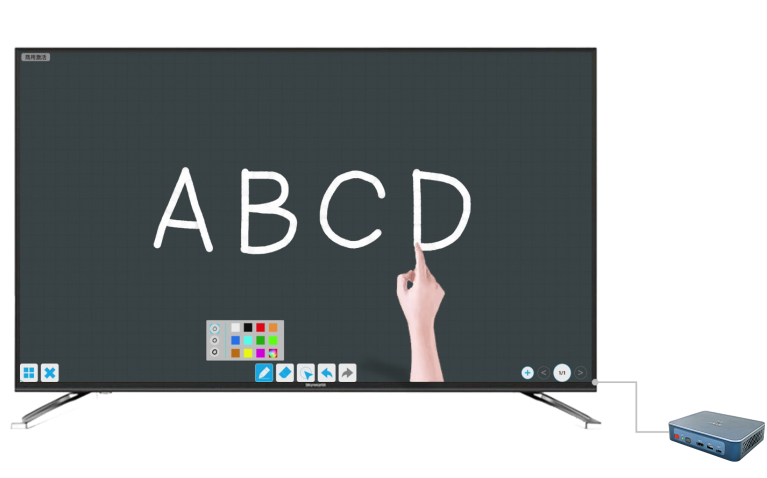Smart classroom is a type of classroom that uses multiple advanced technologies, breaks traditional teaching habits, and creates a self-directed and comfortable learning environment. The main features are:
1. Implement the integration and intelligent application of technologies such as multimedia collaboration system, interactive recording and broadcasting system, intelligent course cloud recording and broadcasting system, intelligent wireless network control system, teacher-student interactive teaching system (interactive teaching, screen projection system, online streaming media teaching, etc.), and multifunctional comprehensive control system (intelligent perception and control, unified management control platform, security alarm).

2. It can achieve centralized control of teaching aids and environment in the classroom, support mobile control and remote inspection.

3. Able to achieve information dissemination function, displaying course schedule information on a large screen or class meeting promotional posters. It also supports electronic whiteboard annotations to reduce dust, protect the environment, and save resources.

There are the following differences between smart classrooms and traditional classrooms:
1. Teaching method: Traditional classrooms mainly rely on teachers’ lectures, while smart classrooms focus on student participation and interaction, including real-time feedback and personalized teaching. In the smart classroom, students can engage in self-directed learning and collaborative discussions through electronic textbooks, interactive whiteboards, and other devices, while teachers play more roles as guides and tutors.
2. Technology application: Smart classrooms can utilize advanced technology equipment such as electronic textbooks, interactive whiteboards, projectors, etc., to provide more vivid and visual teaching content, while recording students’ learning behavior and feedback, providing teachers with objective evaluation and improvement basis. In contrast, the use of technology in traditional classrooms is relatively simple, usually with only basic teaching tools such as blackboards and chalk.
3. Classroom atmosphere: Smart classrooms focus on creating a positive and interactive classroom atmosphere, encouraging students to participate in discussions and collaborations, and stimulating their initiative and creativity. The classroom atmosphere in traditional classrooms is relatively dull, and students are not very willing to interact.
4. Teaching efficiency: Smart classrooms can save teachers time correcting homework and blackboard writing, improve teaching efficiency, and also allow students to learn in a relaxed atmosphere, thereby enhancing learning efficiency.
The smart classroom aims to improve the quality of teaching, change the traditional teacher centered lecture style teaching method, and shift towards a student-centered knowledge innovation learning method, achieving intelligent identification, tracking, monitoring, and management of the teaching process.

In summary, there are many differences between traditional classrooms and smart classrooms. If you have a need for smart classroom renovation, you can contact Bijie Internet for consultation! Bijie Internet provides various smart classroom solutions such as normalized smart classrooms and group discussion smart classrooms, providing you with professional technical support!